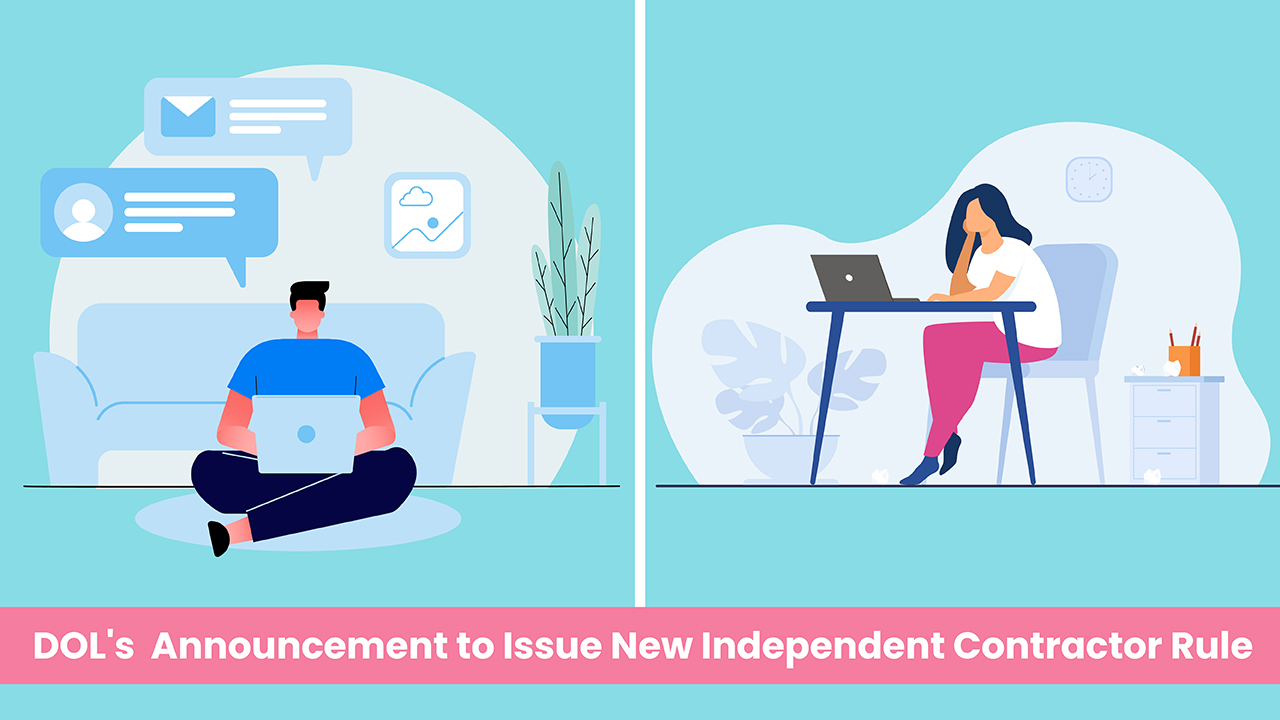
Independent contractors are professionals who provide services based on a flexible working system. Independent contractors are usually those who are free from any authority. They act as an authority for themselves. The major difference between an independent contractor and an employee is that an employee does have an advantage or privilege of certain incomes and benefits such as social security tax and medicare tax.
Employees are generally bounded by their respective organization’s terms and regulations. While on the other hand, independent contractors are not restricted to following any particular organization’s rules and regulations. Also, independent contractors can work for multiple organizations, simultaneously. However, independent contractors could also be identified as self-employed.
Recently, DOL has released certain developmental updates regarding the status of independent contractors. The following update reflects the distinctive traits of independent contractors. This update clarifies the definition and categorization of independent contractors. The DOL has announced the update under the Fair Labor Standards Act (FLSA) guidance, emphasizing the misclassification of independent contractors and employees. The official announcement of the update is quite anticipated at this moment. Yet the speculation suggests that the following update would emphasize that employers might get affected by this update.
Also, National Labor Relations Board (NLRB) is planning for inclusive involvement in this development. NLRB seeks a public-oriented approach on whether the Trump administration era standard should be continued or the Obama administration era standard should be set up with major modifications. Currently, benefits like medicare, social security, and other benefits are not subjected to independent employers. Only employees working for any organization do have access to such benefits.
Under the Trump administration era, the degree of control was deciding whether the individual should be labeled as an employee or an independent contractor. During that time, the regulations focused on an economic reality test that clarifies a worker’s status or its significance of dependence. As of the Biden administration, the Trump administration’s standard set of rules independent contractor rule has been dismissed, and they are seeking to introduce a structured system of sets for the general target audience. For instance, Georgia Law has been in motion since July 1, 2022. The update suggested various inclusions in the process such as medicare tax. Medicare tax has been included for independent contractors. Hence, they are subjected to certain medical-oriented benefits. The new set of risks, obligations, and liabilities are quite severe for the business owners or employers, so careful classification is crucial.
The current independent contractor rule was issued during the previous administration, brought forth to put into effect in March 2021, was delayed by the DOL, and then eventually was withdrawn in May 2021. However, a federal court in Texas mentioned and emphasized that the DOL’s retarding and the abolition were totally against the law. So, the current final rule has been in effect since its original March 2021, date.
How will the update change the independent contractor’s perspective?
Firstly, it has been pretty clear that the DOL would efficiently address the misclassification of independent contractors versus employees in this update. Second, independent contractors don’t include certain benefits, so a standard set of benefits is to be introduced in favor of independent contractors. And, third, possible amendments or developments could lead to certain categorizing prominent professions. The parameters could differ or be restored inspired by previous independent contractor rules




